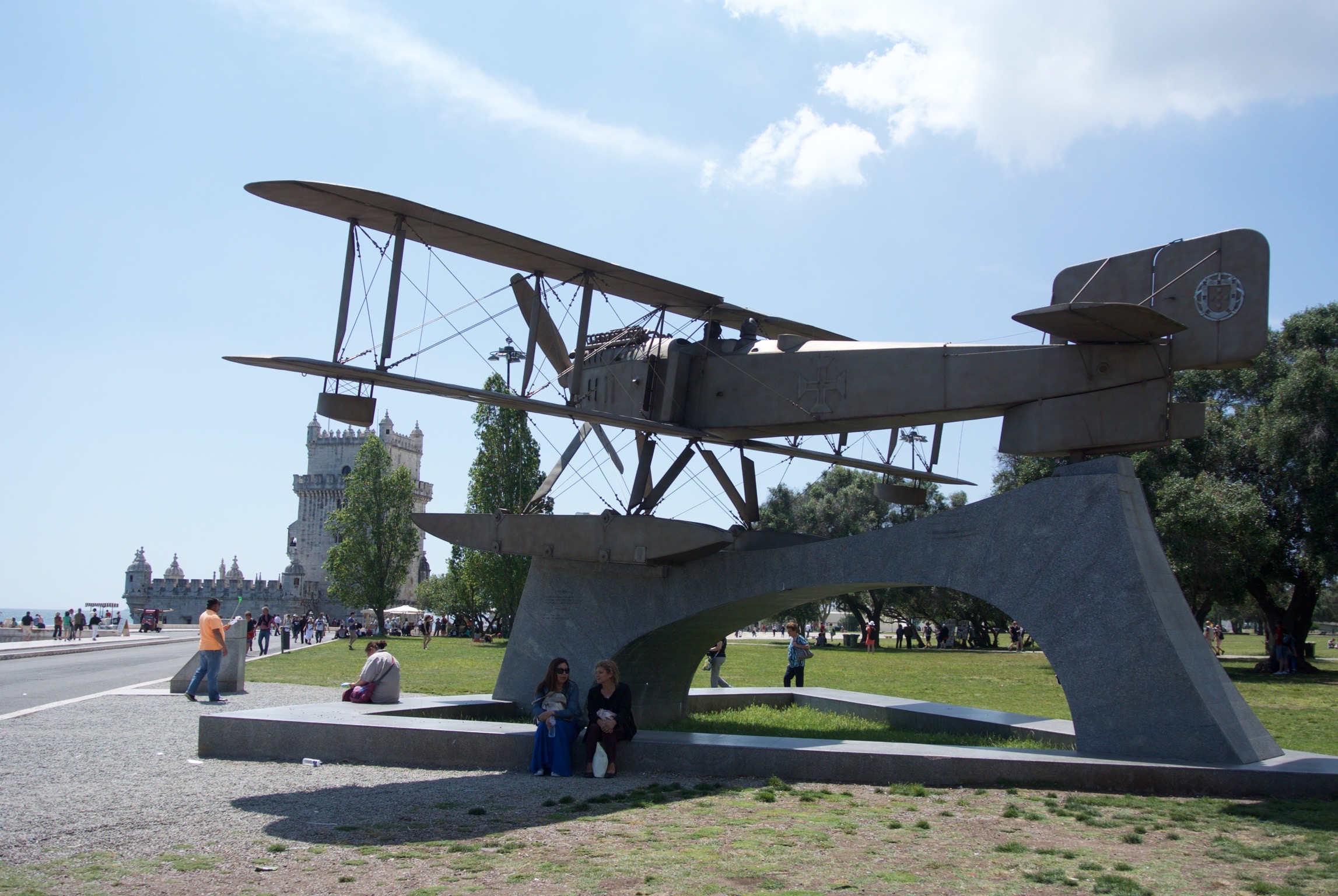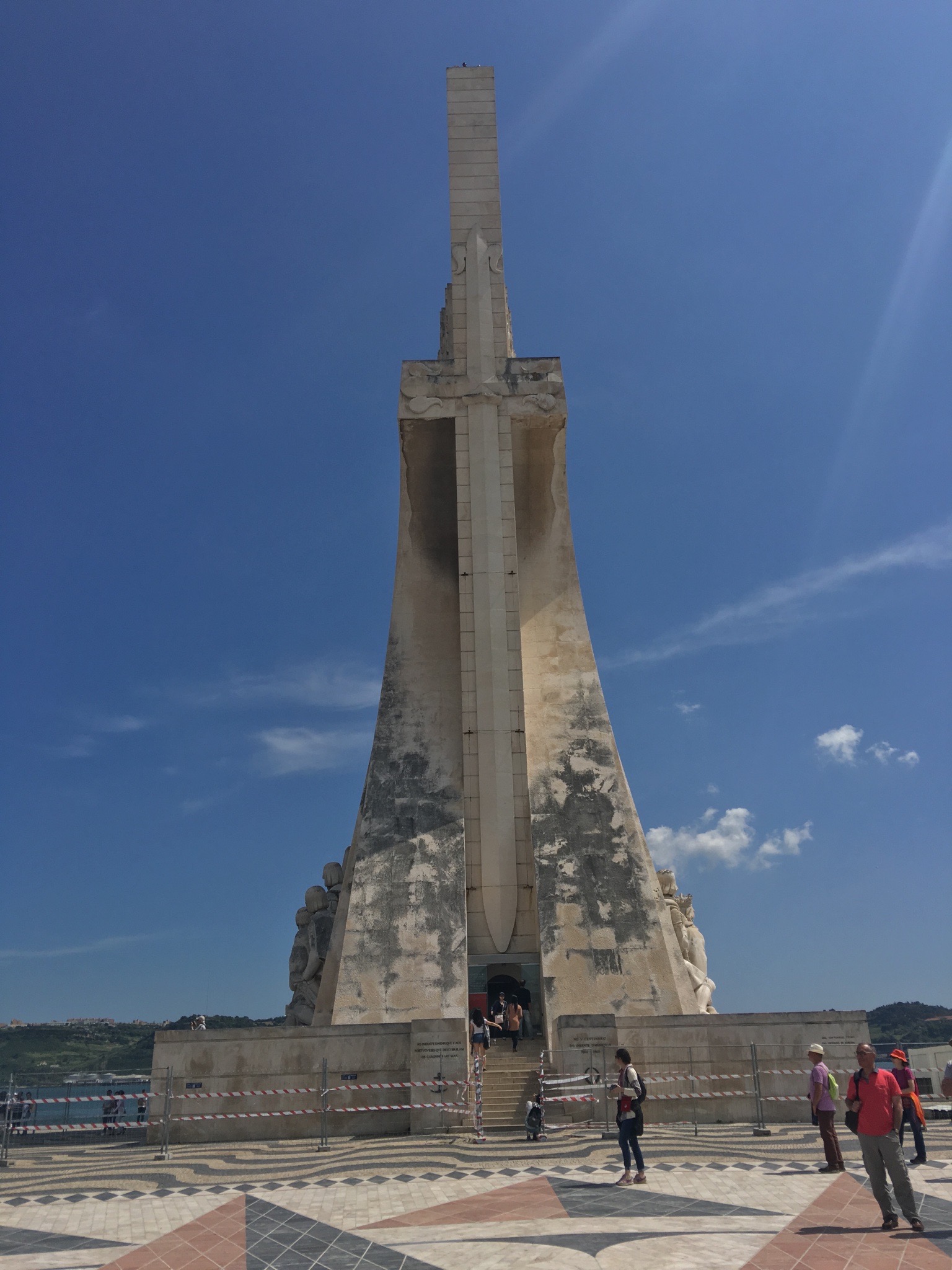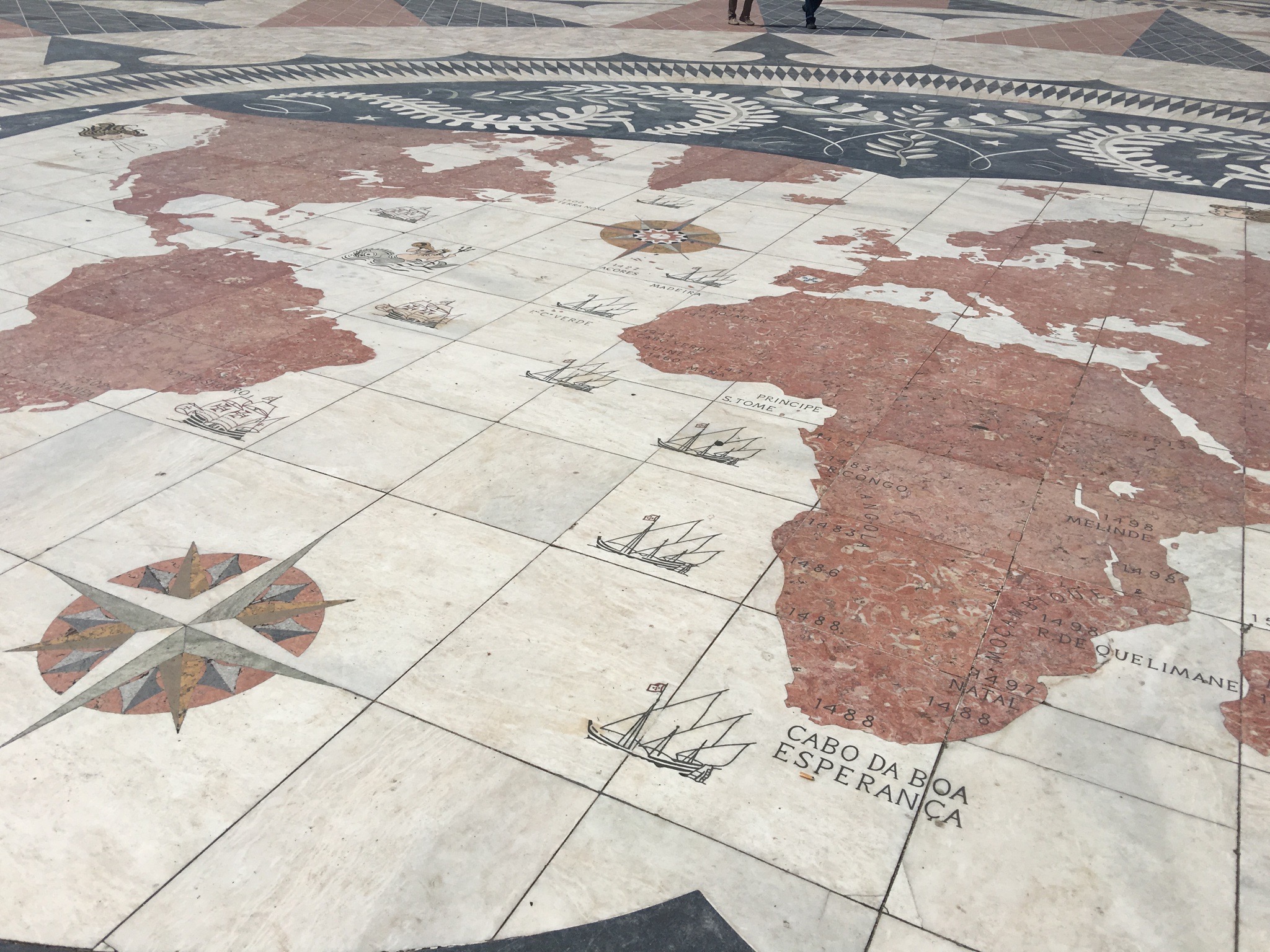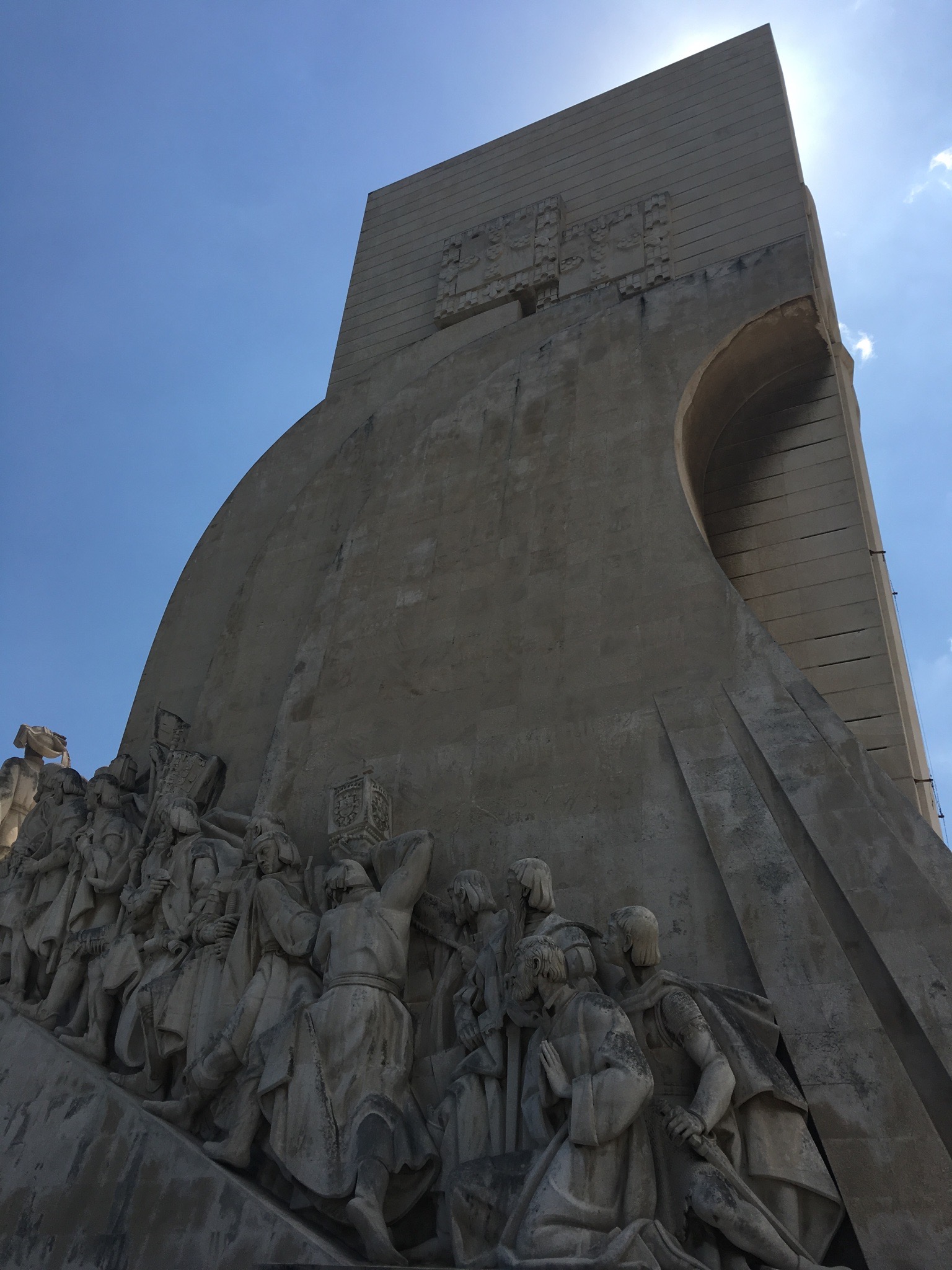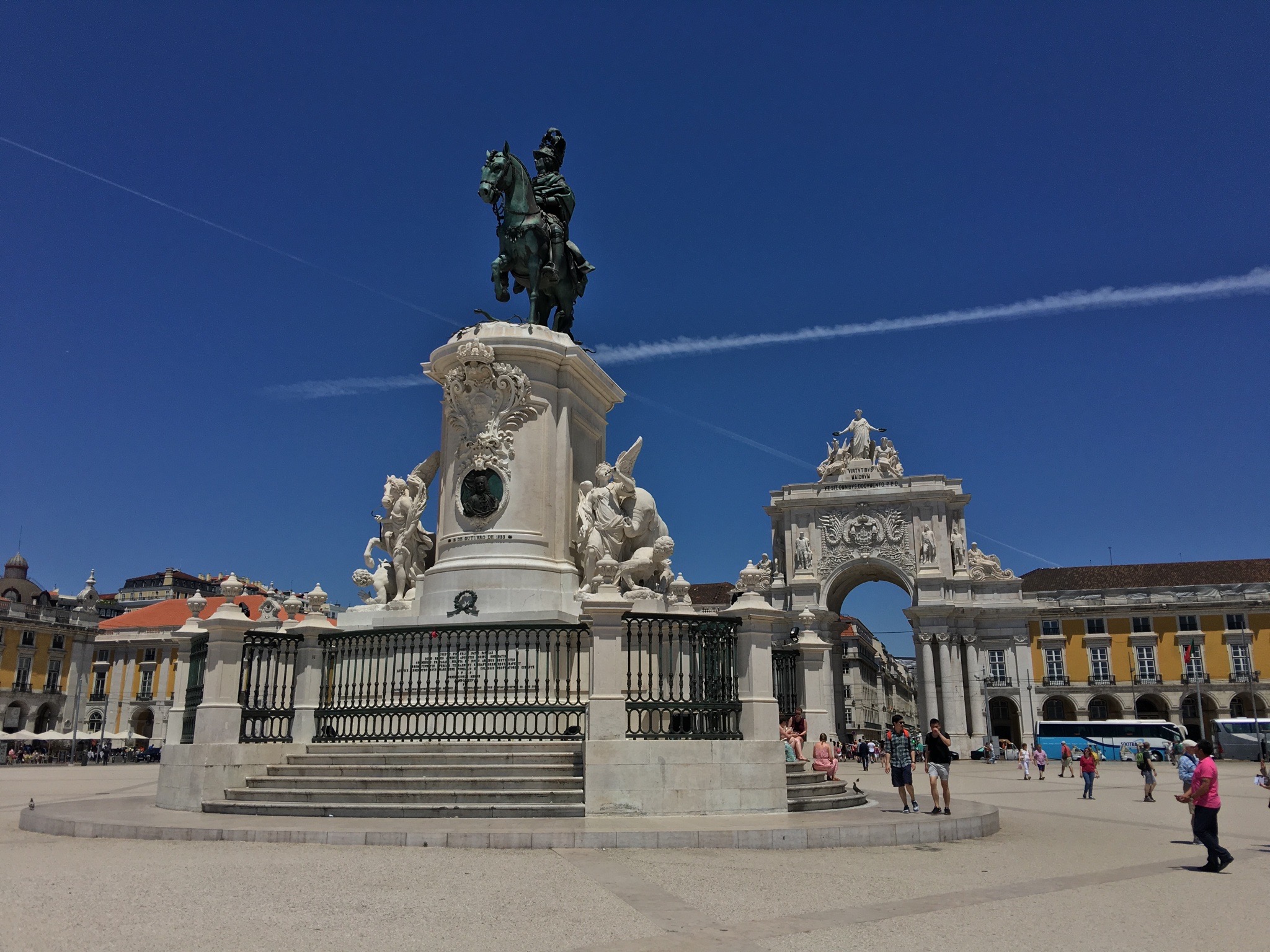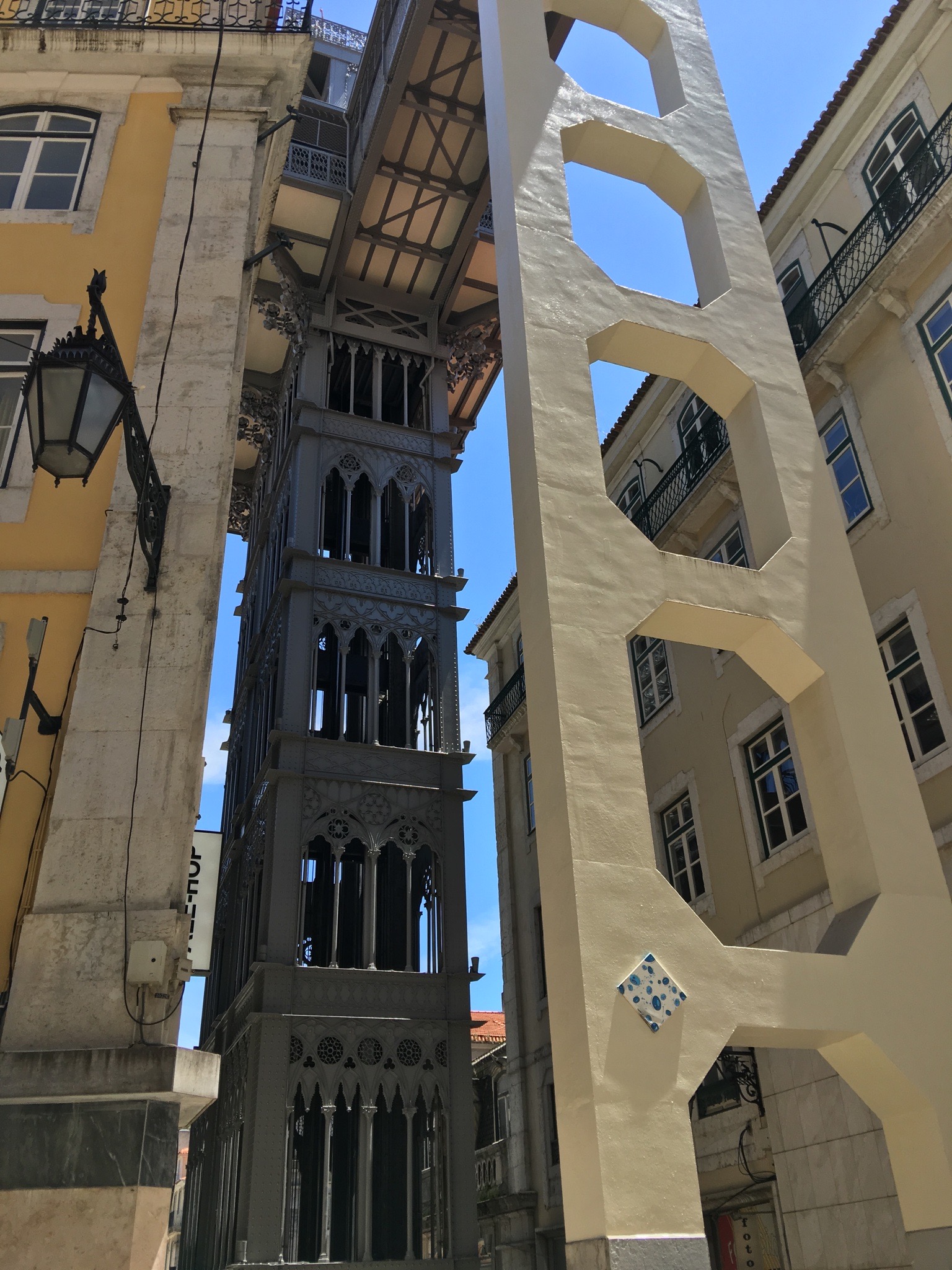Three Weeks in Europe - Lisbon Sights and Attractions
If you go in late May/June, the Jacaranda trees should be in bloom! They are a gorgeous purple, but their blossoms do make the street below sticky
In planning our trip, we found ourselves with a couple extra days to get away from Madrid, but we had already booked flights into and out of the city, so I tried to find a good getaway - I considered some other Spanish cities, but when I stumbled upon overnight train tickets to Lisbon, it seemed like the right decision. It was around $200 for the both of us, round trip, which included two nights of “accommodations”. Would I recommend sleeping on a train? Well, not exactly, but we’re young and we were exhausted and slept anyway, but it definitely wasn’t the most comfortable option. Also, set an alarm for when you think you’re supposed to be arriving, because this train did NOT announce any of the stops, and we nearly didn’t get off in time. 😜
We stayed in a luxurious hotel (near the water and Praça do Comércio) with super friendly staff called Pousada de Lisboa. They did everything to make our short stay enjoyable, had a great little breakfast buffet, and we even got to enjoy their swimming pool, sauna and solarium. They also helped us re-book a tour, because we totally goofed on scheduling our original because the overnight train mixed up the dates in my brain.
After checking in, eating some breakfast and freshening up a bit, we got walking. First up was the Carmo Convent. This church’s roof collapsed in a huge earthquake, and rather than fixing it, they left it, and now it is an archeological museum, and the cathedral area has grass and plants growing in it. It’s amazing to see how much was able to survive the terrible earthquake. Definitely worth seeing for a few Euro if you’re in town. We then walked into the free Museum of National Republican Guard which was right next door. They had a lot of old weaponry, uniforms, and a motorcycle (among other items).
We next walked through Rossio Square, which is one of the bigger expanses of lovely black and white cobblestones that the city is known for. Basically all sidewalks are made with these stones, and a lot of them are laid out in elaborate patterns. Shops can even request that they be redone to display their name on the ground! Our next stop was the Castelo de São Jorge, but we couldn’t figure out how to get in! There was some interesting street art on the way, and all of the views were great. 😍 Plus we were getting a good workout because the city is so hilly - make sure to wear good, comfortable walking shoes (I swear by my cute Crocs), and no stilettos! They will get stuck in the cobblestones for sure!
We then embarked on a driving tour - originally we had scheduled a walking tour, but because of the aforementioned scheduling mix-up on my part, we ended up having to choose something else, and our hotel recommended a driving tour - ours lasted four whole hours, and we got to see a LOT more of the city than we would have on foot - that being said, I hope I can go back and do the walking tour we missed someday! Also, if you would like info about our awesome tour guide, Paolo, let me know!
Our first stop was the Jerónimos Monastery (it’s free to get into the cathedral, but not the cloisters). I would recommend exploring the entire structure, as the nautical details in the stonework are breathtaking. Portugal used to be very rich because of their exploration and so were able to construct this massive, ornate monastery.
Our next stop was the Belém Tower, which sits in the Tagus River. It has architectural details similar to the monastery. You can go inside, but we just walked along the water for a bit. Nearby is a biplane, which was the first to cross the South Atlantic. We then went to Padrão dos Descobrimentos, also along the river, which is a monument to Portuguese explorers of the 15th and 16th centuries. The ground around this monument was particularly exquisite. Not only are there the signature cobblestones, there is a giant compass rose with a world map inside made of marble on the ground, showing routes and destinations from the Portuguese Age of Discovery.
We had been seeing a giant Jesus statue across the river all day, and asked our driver if he could take us there, which he happily obliged. This statue, Cristo Rei, was inspired by the one in Rio de Janeiro, Brazil. Because we crossed the river, we technically went to a second city in Portugal, Almada, and from this vantage point got to see a stunning view of Lisbon. There is a toll to cross the bridge, but, if you’ve got a car/driver (or you want to take the train across) and a couple extra Euro in your budget, I think you’d really enjoy the view!
While driving around, we went past a couple structures that we didn’t stop for, but are worth noting. There is the beautiful stone Águas Livres Aqueduct, which really makes you appreciate the feat of engineering that must have been back when it was constructed. We went past the Amália Rodrigues Garden, a big park a bit further from the water. There are statues and a purposefully unfinished fountain, meant to look dilapidated. In addition, I was amazed at how much the city reminded me of California. Some of the neighborhoods were quite swanky, kind of like the homes in Beverly Hills. The 25 de Abril Bridge from Lisbon to Almada is a suspension bridge that looks a lot like the Golden Gate Bridge because of it’s color. The hilly-ness of the city reminded me a lot of San Francisco, too.
Next was the Santo António Church, which has a similar shape to Notre Dame. It was free to go inside, and is beautifully painted. We also mentioned to our driver that we weren’t able to find the entrance to the castle when we were walking around earlier, and he had a good solution for us - he took us to one of the better places to see the castle from afar - Miradouro da Senhora do Monte. There is a chapel here, too, and our driver told us that pregnant women frequently come here and sit on a stone bench to protect their babies.
The narrowest street in Portugal, Escadinhas Do Terreiro Trigo, in the Alfama district
The next day we didn’t have any specific destinations - just some window shopping (I ended up getting a cork wallet - Portugal is known for cork) and exploring those gorgeous cobblestone streets by foot! We wandered through a bunch of wine shops, which was fun, because my father-in-law wanted us to find a wine he particularly enjoyed when he visited. We were unsuccessful, but all of the shop owners verified that this wine was indeed fantastic, and that they wished they still had it. I think it was a limited run from a specific year, so when it’s gone, that’s it.
We ended up at Miradouro de São Pedro de Alcântara, which offered another great view, and a colorfully graffitied funicular (a cable car on a hill). We walked past the Elevador de Santa Justa, an elevator that was designed to help with the fact that the city is so hilly, but is now mostly a tourist attraction (there was a very long line so we didn’t ride). The architecture reminds me of the Eiffel Tower, and was actually designed by Ponsard, one of Eiffel’s students.
We also spent some time relaxing at Praça do Comércio - there is a statue there that pigeons don’t seem to like to land on - our tour guide told us that it is because of the snakes on the statue. Just before we had to head back to the train station, we sat by the water for a bit at the plaza, and a guitar player started playing some jazzy music - it was the perfect way to conclude our last-minute whirlwind trip to Lisbon.









